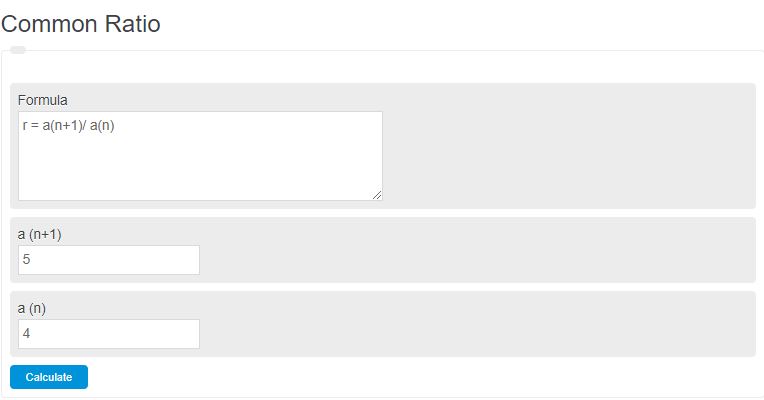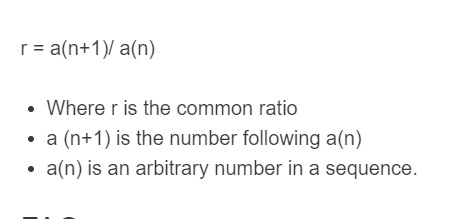Enter any two consecutive terms of a sequence into the calculator to determine the common ratio.
- Negative Binomial Calculator
- Equivalent Ratios Calculator
- Binomial Coefficient Calculator
- Conditional Probability Calculator
- Simplify Ratio Calculator
What are common ratios?
Common ratios are values in a geometric sequence in which the previous numbers of the sequence are multiplied to achieve the next number in the sequence.
A geometric sequence (also see geometric progression) is a sequence of non-zero integers where each term after the first is found by multiplying the previous one by a fixed number. This fixed number is known as the common ratio.
Common Ratio Formula
The following equation is used to calculate the common ratio of a sequence of numbers.
cr = a(n+1)/ a(n)
- Where cr is the common ratio
- a (n+1) is the number following a(n)
- a(n) is an arbitrary number in a sequence.
Common Ratio Example
How to calculate a common ratio?
First, determine the first, or an arbitrary number of a sequence. For this example, the first number of the sequence is found to be 12.
Next, determine the next number in the sequence following the number above. In this case, the number is found to be 36.
Finally, calculate the common ratio using the formula above:
cr = a(n+1)/ a(n)
cr = 36 / 12
cr = 3
FAQ
A common ratio is a term used to describe the ratio of consecutive terms in a sequence of numbers.
A sequence is any set of numbers that can be described using a formula such that any subsequent number can be calculated using the same formula.

